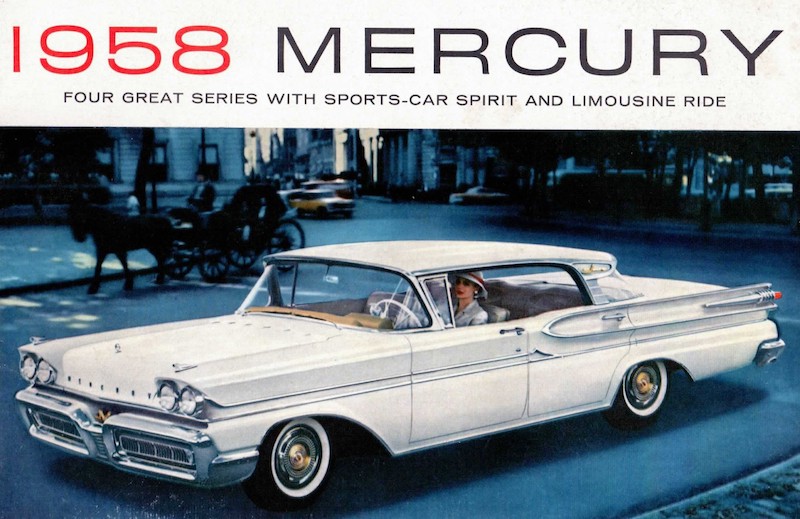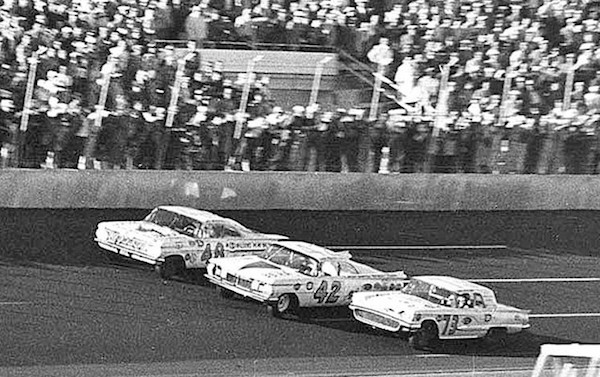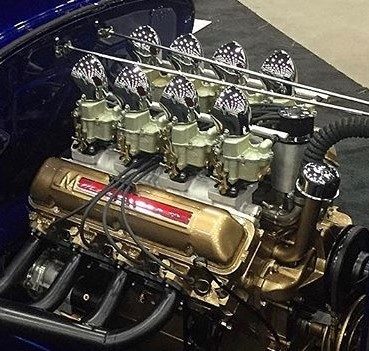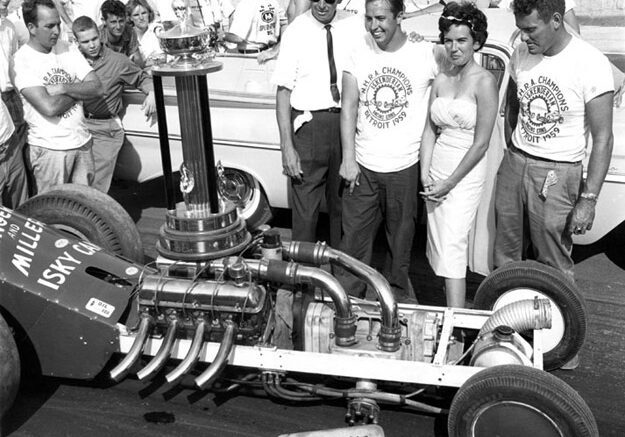Q: Greg, I see your articles every week and enjoy reading about the old cars of the 50’s and 60’s when I was growing up.
We all know that the ‘64 GTO is considered by many as the first muscle car because of the time, and other muscle cars coming out shortly after the GTO. But, back about 1965 I bought a ‘58 Mercury for $95 and found it in the last row of a small car lot. It was a two-door and had a V8. I looked inside and it was a 3-speed manual.
I bought the Mercury and my dad was not very happy, but I saved some money and he was okay with it. I took it home and it was an ugly yellow with a white top, and the fins where white. My friend came over to see my new car and he was about two-years older then me. After looking at the engine he said you know that is a 430 cubic-inch engine and this thing should really go.
We tuned it up and had a garage down the street where we put in a new clutch. My friend and I also put in a cheap 3-speed floor shifter from Pep Boys. We “rattle canned” it flat black, took off the hubcaps it looked like a wicked machine.

The 1958 Mercury was a very large car in an all-new design. The 430 V8 was available as an option that year and available with a 3×2 carb setup. It was the first car to offer 400-horsepower and the intake was produced for Ford by Moon Products, an early hot rod parts innovator. (Mercury)
I took it out to the local loop where all the guys would have their “light to light” races, and then go to the local McDonalds and brag on our runs we had in town.
I was giving the new GTO’s and Chevy SS’s a hard time when street racing. (It was fun fun fun.)
I do not believe there are many of these left and I see that Ford did make a 430 V8 with 400-horses with 3×2 two-barrel carburetors. Mine only had a big AFB 4-barrel carburetor, but shouldn’t the ‘58 Mercury also be considered a first muscle car also?
Thanks for all your stories and I look forward to your upcoming article on the first real muscle car.
Barry Harsh, Mountville, Pa.
A: Barry, absolutely yes, and I’m glad you brought this car up for discussion. You are “right on” for the ’58 Mercury with the 430 being a “first real muscle car” candidate. Further, although these 430 engines had a limited but storied history in hot-rodding, they first came to my attention following two distinctive performances.

This still famous photo of the finish of the first Daytona 500 in 1959 finds Lee Petty in an Oldsmobile just inching ahead of Johnny Beauchamp in a 430 Ford Thunderbird to win the race. On the outside in a Chevrolet is Joe Weatherly, who was one lap behind. (NASCAR)
In the 1959 NASCAR season, Holman Moody campaigned a number of Thunderbirds powered by these 430 engines, which I’ve written about in detail in past feature articles. Although the cars were “heavy up front” thanks to the 430’s overall weight (they were ill handlers), they were successful nonetheless on the big speedways. Specifically, a Holman Moody 430 Thunderbird driven by Johnny Beauchamp finished a close second to Lee Petty in an Oldsmobile at the inaugural 1959 Daytona 500 in a photo finish. The 430 was also an optional engine in 1959 and 1960 consumer available Ford Thunderbirds and commonly referred to as the Thunderbird 430 Special.
The second distinctive performance came on the dragstrip, namely the 1959 NHRA U.S. Nationals at Detroit Dragway. There, the Texas-based team of Rodney Singer and crew chief Karol Miller (see Photo) used a 430 Ford / Lincoln engine coupled to a GMC supercharger in their home built dragster to win the 1959 NHRA Nationals Top Eliminator title. This victory was the first for a supercharged Top Eliminator entry in NHRA history.
As for some history, the 430 was produced by Ford in 1958 to be used in Mercury and Lincoln automobiles, and was kept in production until the end of 1965. However, it was also made famous by the aforementioned 1959 Ford Thunderbirds that nearly won the very first Daytona 500. This engine was only used in Ford vehicles in 1959 and 1960 and was part of thr MEL (Mercury / Edsel / Lincoln) series of V8 Ford engines.
Although the 430 engine is not mentioned much among car enthusiasts today, as you note it deserves a lot of respect. The 430 was the first production engine to reach 400 horsepower in the 1958 Mercury Super Marauder, although the engine was used in far more Lincolns and is often referred to as the Lincoln 430. It was then replaced in 1966 by the Ford 462 that had bigger bore and stroke.

Here’s an 8×2 carburetor setup on a 430 Mercury V8 that was the hot ticket back in the later 1950s. It was produced by Weiand and then also by Offenhauser. (Weiand)
Here are the engine specifications: 1958 with 4-Barrel Carb, 10.5 compression, 375 horsepower and 490 lb. ft. of torque. Bore was 4.30 and crank was 3.70 in. If you opted for the 3×2 carb setup, horsepower went to 400 with similar torque. Your $95 Mercury was the 375-horse version.
The 400-horse version was an option on all 430 equipped 1958 Mercurys and all 1958 Lincolns and Continentals. The tri-power intake manifold was cast for Ford by Moon products combined with three Holley 2300 carburetors.
I’ve always said that if Ford did one thing really good, it was produce many different V8 engines. However, the achilles heel to this outstanding development was that the growing aftermarket hot rod industry just couldn’t keep up. I do remember, in addition to the 430 factory available 3×2 intake, and just behind GM’s Oldsmobile division that released theirs in 1957, Edelbrock released a 6×2 intake and Weiand an 8×2 offering called the Weiand Drag Star. I remember seeing it on one of the cars that raced at Vineland Speedway quarter-mile drag strip in New Jersey with an 8×2 carb setup and it was really something special to see back then.
Other than that, and with great respect to the Holman Moody crew that prepped Ford’s early 430 engine NASCAR efforts, the 430 ended up as an overweight engine that was replaced by the newer Ford FE engines, one of which was in my 1959 Edsel in 292-inch form. As the years went by, the 430 disappeared from Ford offerings while the FE engines grew to 427 inches and prospered both in NASCAR and NHRA racing.
Because of the changing nature of heads, intakes and piston designs, as well as a limited life span, not many aftermarket speed parts were made for the MEL line of engines. In addition to the aforementioned Moon produced factory intake manifolds, racing pistons for early 430 V8 drag racers were produced by a company called Jahns Racing Pistons with offerings up to 13:1 compression ratio.
Again calling attention to the 1959 Winner’s Circle drag racing photo, several offerings by Isky Cams were available for the 430 and highly visible lettering on the dragster as to what cam was actuating the valves. (Isky was an early contingency prize money supporter of drag racers and regarded by many as the very first to pay winners using their cams).
Thanks much Barry for your interesting letter and giving those 430 powered Fords, Mercurys and Lincolns their just due when it comes to muscle car performance. Too bad they were so heavy for the oval racing cars but proved to be real winners on the street and drag races.
(Greg Zyla is a syndicated automotive writer who welcomes reader questions on collector cars, auto nostalgia and motorsports at greg@gregzyla.com).



Be the first to comment on "Collector Car / Cars We Remember; Ford’s 430 muscle car V8 engine: gone and sadly ‘forgotten’"